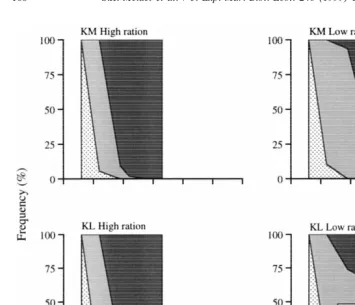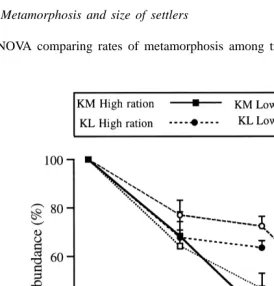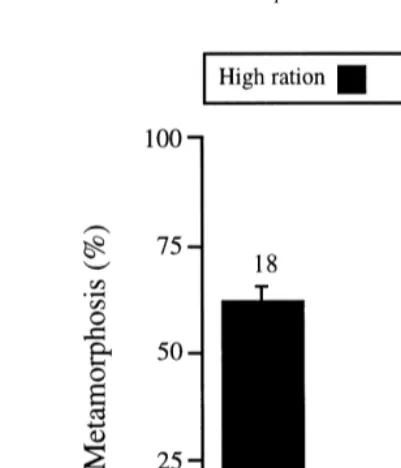Directory UMM :Data Elmu:jurnal:J-a:Journal of Experimental Marine Biology and Ecology:Vol241.Issue1.Aug1999:
Teks penuh
Gambar




Dokumen terkait
of different chemical (e.g. metal concentration in ingested sediment, and oxic / anoxic condition of sediment) and ecological conditions (presence of other food particles) on
In experiment VI, for example, growth rates were significantly lower for worms raised at 12‰ but there were no significant differences in mean respiration rates at any of the
The extract was toxic to all the 11 species of heterospecific larvae we tested. The presence of such a broad spectrum of activity may indicate that it has a significant
While it was initially found that most larvae settled in the largest patches, when total numbers of barnacles settling each year were divided by unit area (total settlers / area
Mean values of clearance rates as well as means of the other physiological variables from each treatment were compared by analysis of variance followed by a Tukey test of
Recent development of highly sensitive fluorometric techniques for direct measurement of nucleic acid content has permitted the analysis of individual larvae (Clemmesen, 1988,
Most publications on mysid feeding rates report the factors (usually food density) affecting the clearance rates for filter feeding (on phytoplankton) or predatory feeding (on
Consequently, larval life history parameters in the plankton are generally affected by the same factors, namely temperature, food quality and quantity (Sprung, 1984), abundance


